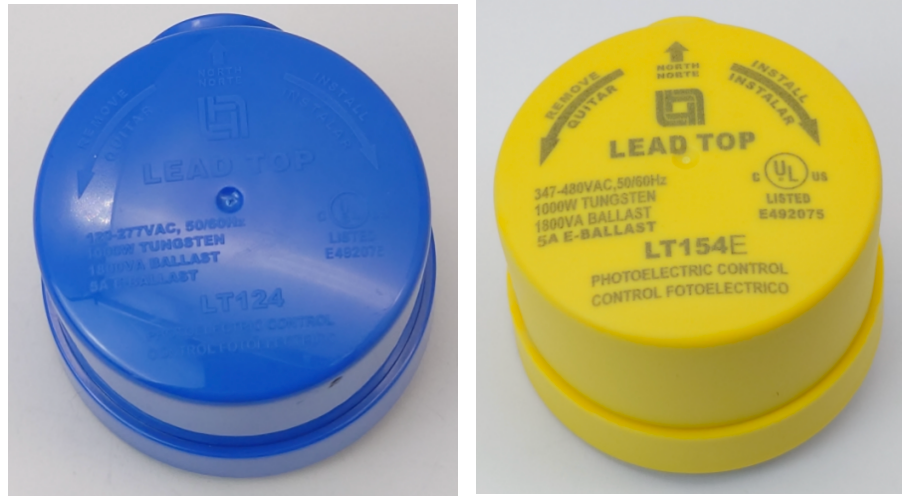Table of Contents:
This article discusses the feasibility of using a single lamp controller to control multiple lights, analyzing the pros and cons of this approach. The main points covered include:
- Basic Concept of Single Lamp Controllers
- Potential Issues with Series Connection
- Correct Application Approach
- Final Verdict and Recommendations
- Leadtop Photocell Recommendations
In modern lighting control systems, fotocélulas play a critical role in automation, and they are widely used in street lighting, parking lots, gardens, smart homes, and commercial buildings. By sensing changes in ambient light, photocells automatically adjust the on/off status of lighting fixtures, offering a convenient solution. This automation provides convenience, energy efficiency, and enhanced safety.
In practical applications, some users may consider connecting multiple lights together and controlling them with a single photocell. This article explores whether fotocélulas are suitable for controlling multiple lights with a single lamp, analyzes the pros and cons of this approach, and offers insightful recommendations for optimal use in diverse lighting systems.

Basic Concept of Single Lamp Controllers
A single lamp controller, as the name suggests, is a photocell device designed to control a single light unit. The photocell sensor works by detecting changes in the surrounding light intensity and consistently turns the light on or off automatically based on the intensity of surrounding light, aiming to save energy and reduce manual intervention. It is mainly used in simple control systems, ideal for standalone light fixtures.
Potential Issues with Series Connection
- Distorted Light Perception: Since multiple lights are likely to be distributed across different areas with varying light intensity, a single photocell can’t accurately sense the light levels across all areas. This may result in some lights being unnecessarily on, and energy may be wasted. To overcome this issue, it’s essential to implement more advanced control systems that can individually adjust to the specific lighting needs of each area, ensuring that the lights are only on when truly necessary.
- Increased Failure Risk: If one of the connected lights crashes, it could affect the whole system, preventing other lights from operating accurately and complicating maintenance and troubleshooting. This interconnectedness may increase downtime and make it more difficult to ensure consistent, reliable lighting.
- Inaccurate Control: A photocell can only control lights based on changes in the surrounding light. When multiple lights are connected, the photocell won’t be able to achieve precise zone control, potentially reducing the efficiency of some lights. This lack of individual control can lead to wasted energy, as lights in areas where natural light is sufficient may remain on, while those in darker areas may not activate in time.
- Load and Power Limitations: When connecting various lights in series, the photocell should have the ability to handle the total power consumption of all connected lights. If too many lights are added, the photocell could be overloaded, leading to equipment failure or insufficient light brightness. Therefore, It’s essential to keep in mind the load capacity of the lights and the rated power of the photocells.
- Voltage Drops and Current Fluctuations: Connecting multiple lights in series may cause current variations and voltage drops, which could affect the typical operation of the lights, especially for high-power lights. With time, this could cause wear and tear on the electrical modules, reducing the lights’ lifespan.
Since a single lamp controller is designed to control a single light fixture, it is not suitable for controlling multiple lights in series. When multiple lights are connected to a single photocontrol, the photoelectric sensor’s light detection will only be influenced by the light levels of one fixture, making it unable to respond to changes in the other areas. This limitation can lead to inconsistent lighting control across multiple fixtures, potentially resulting in energy waste or insufficient illumination in some zones.
Correct Application Approach
For controlling multiple lights, it is recommended to use a dedicated multi-lamp controller, especially a dusk-to-dawn photocell system designed for more complex setups. A multi-lamp controller comes with intelligent control features and can manage multiple lights through networking. A single main controller can even manage up to 50 secondary controllers allowing precise management of lighting in different areas, ensuring each zone receives the correct amount of illumination based on ambient light levels. This method eliminates the issues of energy waste and inconsistent control found in series connections, making it a more reliable solution for large-scale lighting systems. However, this approach does come at a higher cost, which may be a consideration for budget-conscious projects.
Final Verdict and Recommendations
A single lamp controller is not suitable for connecting multiple lights in series because it cannot effectively manage the light requirements of multiple fixtures, and it may lead to energy waste and imprecise control. If you need to control multiple lights simultaneously, a multi-lamp controller is a better choice. The photoelectric sensor improves system stability and efficiency and enables more intelligent lighting management.
Selecting the right product based on actual needs is crucial. Leadtop Electrical offers a range of photocell products to meet various market and project requirements:
- Municipal Tender Projects: LT124 e LT134 are suitable for strict municipal lighting projects, meeting high safety and functional standards. With their robust design, these models are built to handle the demanding needs of public lighting, offering efficient energy management and reducing operational costs.

- South American Market: LT104 photocell strictly follows the NBR 5123 standard, designed specifically for lighting needs in South America, offering excellent performance and stability. Their adherence to local standards ensures both safety and energy efficiency, contributing to the development of sustainable lighting solutions across South America.
- North American Market: LT154E(480VAC) e LT310A are designed for the North American market, featuring high efficiency and durability while complying with local standards and safety requirements. With North American safety standards, these photocells contribute to sustainable, cost-effective, and long-lasting lighting solutions.

- Smart Photocells: LT110 is an intelligent photocell suitable for applications requiring more advanced control, such as smart homes and smart city projects, supporting remote management and networking.

Whether you need a single lamp controller or a multi-lamp controller, Zhejiang Leadtop provides high-quality, standard-compliant products tailored to various market and project needs, helping customers achieve optimal lighting control solutions.






